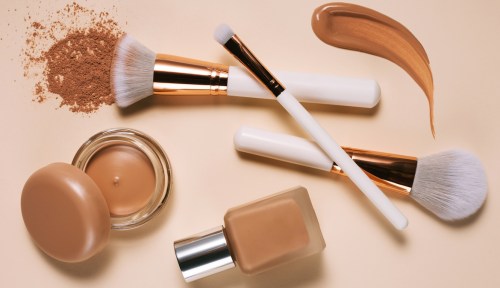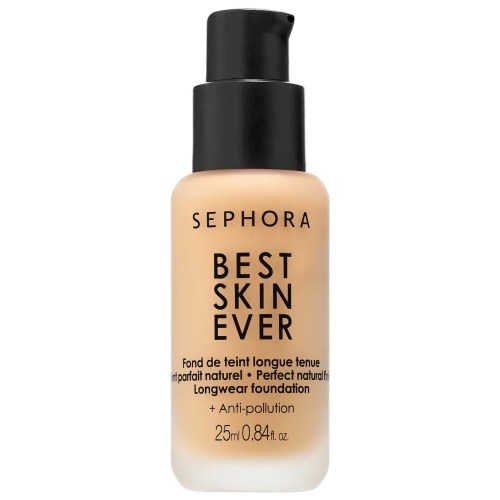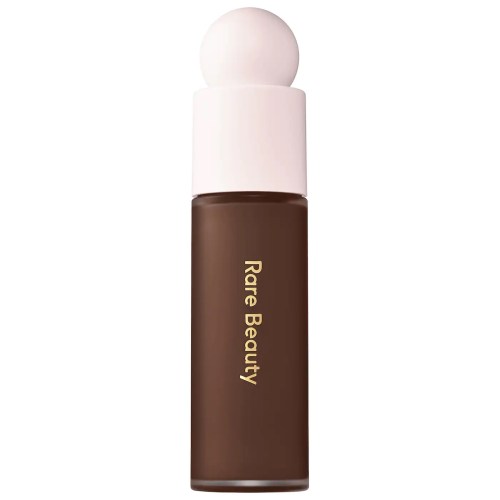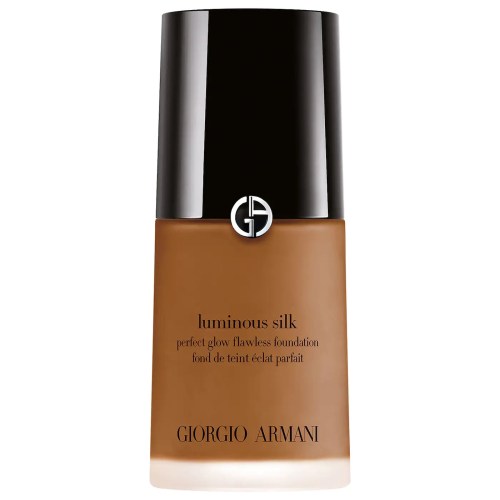Our editors independently select these products. Making a purchase through our links may earn Well+Good a commission
Sephora’s ‘Yoda of Foundation Matching’ Shares Her 3 Rules for Finding the Perfect Shade Every Time
Sephora artist Helen Dagdag shares her top foundation matching tips to get the perfect shade for your complexion every time.

When shopping for new makeup, there are a few staples you know you can pick up without missing a beat. Mascara, brow gel, and eyeliner, for example, are pretty straightforward to select, because they don’t require any intensive shade matching. Foundation, on the other hand, isn’t so easy, because finding the right shade for your complexion can take a lot of consideration and testing.
“Shopping for foundations is like finding your favorite pair of jeans,” says Helen Dagdag, a national artist with Sephora Collection who’s lovingly referred to as “The Yoda of Foundation Matching.” “It takes a minute, but you can— and will—find your best fit.”
Below, she shares her pro tips for getting it right every single time.
1. Consider your full face

Sephora Collection Best Skin Ever Liquid Foundation — $20.00
Finding the perfect foundation takes time and perseverance, mainly because it requires lots of knowledge about your skin. First, you have to find something that works with your entire face.
“Most people have multiple tones on their face, and using just one shade looks unnatural,” Dagdag explains.
These “multiple tones” typically come as a result of UV exposure—your nose tends to be the darkest because it gets the most sun. If you don’t want to mix foundation shades, she recommends trying to match the exact center of your face—around the nose or between the eyebrows—and then using bronzer and concealer to help match that tone.
2. Explore undertones

Rare Beauty by Selena Gomez Liquid Touch Weightless Foundation 5K | Ask a question | — $29.00
Everyone’s skin has undertones—aka the cool, warm, or neutral tones under your skin that impact the overall hue of your complexion. When it comes to finding a foundation match, it’s extra important to take yours into consideration.
There are a few different ways to figure out your undertones: Some people swear by the “t-shirt trick,” while others insist that your jewelry preference can tell you all you need to know (if gold looks best on you, you’re warm; if you skew toward silver, you’re cool), but Dagdag recommends simply looking at your wrists.
“That area is usually uniform in tone and your veins are visible which can also guide you,” she explains, “If your veins appear purple/light green, you have a neutral undertone. If they appear blue, you have a cool or pink undertone. If they are green, you have a warm or yellow undertone.”
3. Swatch and let it sit

Armani Beauty Luminous Silk Perfect Glow Flawless Oil-Free Foundation — $69.00
Once you’ve decided what your undertones are, you can then go ahead and start browsing products. If you’re going in person (which is the recommended way to shop for foundation) start with some swatching. “I would suggest swatching the foundation on the center of your face, and always check it near natural light to ensure you have a true match,” says Dagdag.
Most importantly, though, be sure to give the foundation a bit of time to sit on your skin before making a final decision. “One common misconception is that some foundations oxidize on the skin and change shades. This can be true, but more often it is just that it needs a chance to dry down like paint,” she says. “The initial swipe will usually be lighter than the finished result.”
Check out the video below to see how our senior beauty editor adds SPF to every step of her makeup routine.
Sign up for the Well+Good SHOP Newsletter
Get exclusive deals on wellness, beauty, fitness, and food products that have been hand-picked by our editors.
Got it, you've been added to our email list.










